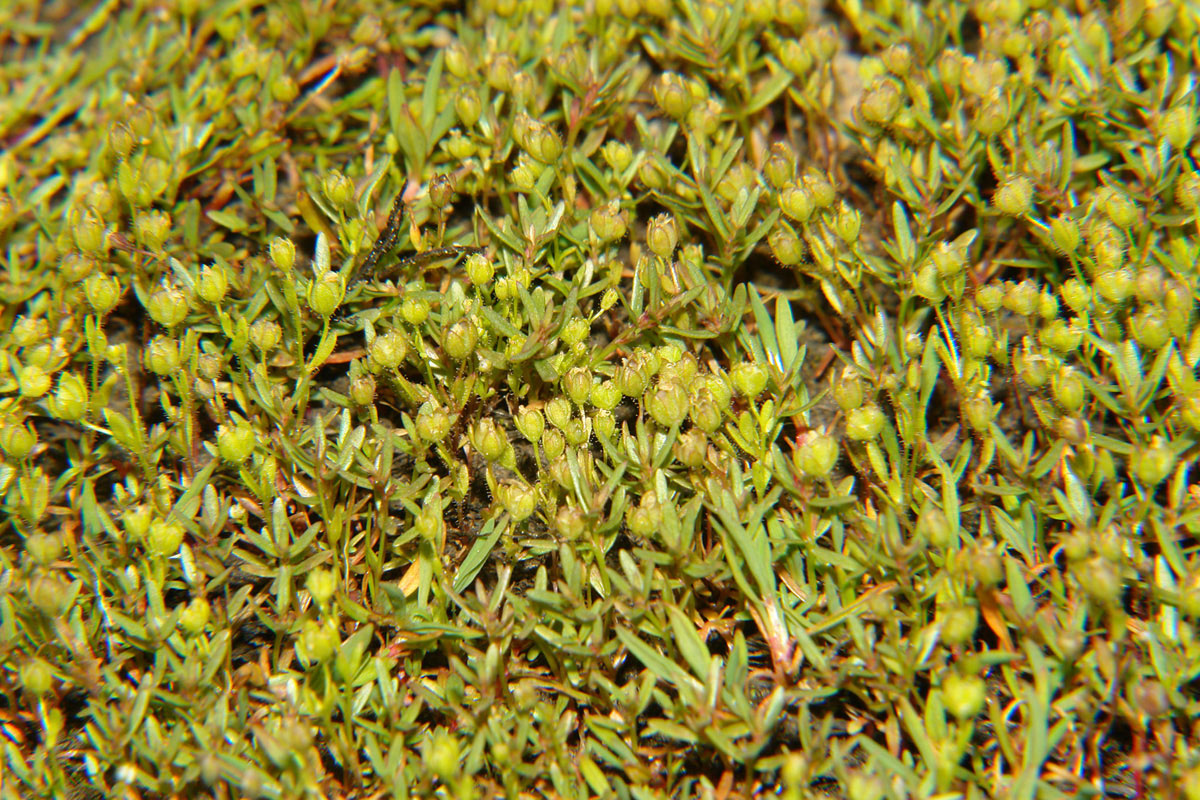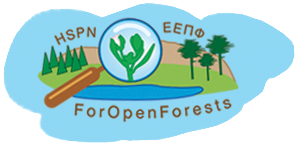Main menu
Conservation of priority forests and forest openings in "Ethnikos Drymos Oitis" and "Oros Kallidromo" of Sterea Ellada, LIFE11 NAT/GR/1014
Actions
Action C.2: Enhancement of the population of Veronica oetaea*

The purpose of this action is to increase the population size and the area of occupancy of the threatened plant species Veronica oetaea* by the introduction of the plant at new locations.
It is a pilot action and will be implemented according to the specifications provided by action A.4, starting in the third year of the project. The action will take place at temporary ponds (3170*) with favourable conditions for the species within the current distribution area of the plant on Mt. Oiti, and also at the neighbouring area of Mt. Kallidromo, where the ecological conditions are similar to those of Mt. Oiti. The proposed locations are the ponds at Louka and North of Trapeza on Mt. Oiti, and those at Souvala and Nevropolis on Mt. Kallidromo. The final selection of the restoration sites will be made according to the specifications of action A.4.
The restoration sites will be fenced (action C.1) so as to avoid accidental destruction of the new plants. Seeds of the plant will be collected during the first year of the project (action C.7). Veronica oetaea* is a dwarf annual species, so the establishment will be made by seeding. Seed collection and treatment will be carried out in collaboration with action C.7. Seeding in the field will take place at the appropriate period (according to actions A.4 and C.7) during the third year, and will be repeated in the following years if necessary. The success of the establishment of the population will be monitored annually. The methodology of this work will be evaluated and, if required, amended annually according to the results of monitoring. Details of the whole process will be recorded.
Regarding the plant material available for Action C.2:
The total current population of Veronica oetaea* is estimated to be approximately 50,000 – 80,000 plants (expert opinion). The reproductive biology of the species has not been studied, so this allows only for, more or less, theoretical calculations, based on simple observations. Moreover, a lot depends on the weather conditions in particular years. So, please, note that the following is only a reasonable but not validated estimation. According to the scientific description of Veronica oetaea*, each plant produces 1 – 11 capsules containing 40 – 60 seeds each. Thus, 10% of the annual production of seeds, which is the maximum number of seeds we are allowed to collect, is expected to be 200,000 – 5,280,000. This means that, unless there are very high population fluctuations, at least 200,000 seeds will be available for collection. In this case we will collect at least some 100,000 seeds in the first year, and use a maximum of 1,000 seeds for germination tests. That still leaves at least some 25,000 seeds available for sowing in each location in the first year; the final numbers will depend on the results of the germination tests. The numbers of seeds collected and sown in the subsequent years will depend on the success and the lessons learned during the first year at each stage of the process.
According to the IUCN terminology, action C.2 includes:
- Re-introduction at the ponds of Louka and North of Trapeza in GR2440004, because these are considered to be within the historical distribution range of the species.
- Conservation/benign introduction at the ponds of Souvala and Nevropolis in GR2440006, because these are outside its recorded distribution range but within an appropriate habitat and eco-geographical area. In this case, even though there is some remaining area left in the species historical range, this area is extremely small (at most 0,03 ha) and cannot be increased.
The required conditions for species re-introduction are listed below, along with an explanation of how action C.2 complies with them:
- It is justifiable and has a high chance of success. Veronica oetaea* is a critically endangered (CR) species so protection measures are justified.The criteria for the characterisation of the species as CR are: a) the restricted extent of occurrence and area of occupancy, and that it has only 1 subpopulation at 1 location; in combination with b) the large annual fluctuations of the population size due to the annual variation of the hydrological conditions; and c) the fact that its current habitat is threatened. So, it is justified to attempt to increase the number of locations. The attempt has a high chance of success, because it will be done at a similar habitat (high altitude 3170*) and the species is expected to readily reproduce by seed. It also has a high chance of success because criterion (c) is also addressed (see below).
- It targets areas where the causes of extinction of the species have been eliminated. The habitat of the species is 3170*, one of the target habitats of the project, and we expect that the threats against the habitat will be eliminated.
- The removal of individuals for re-introduction will only considered if it would not endanger the captive or wild source populations.
- Action C.2 does not entail removal of individuals. It will use seeds collected from the natural population (only up to the prescribed 10 % of the annual production of seeds).
- It targets areas whose habitats meet the conditions necessary for the survival of a viable population of the species The selected target areas will have the specialised habitat of the species (high altitude 3170*), at similar edaphic conditions.
- It establishes and documents a prior agreement between all parties involved. The relevant authorities are the RST, which is a project partner, and the Management Body of the National Park of Mt. Oiti, which has declared its support to the project.
- It targets only areas where the attitude of the local population towards the planned reintroduction is favourable, or there is a reasonable expectation that local acceptance can be achieved during the duration of the project. There is, indeed, a reasonable expectation for local acceptance, especially since public awareness and education actions will be implemented during the project.
- It only reintroduces plants that belong to the closest and most similar population available (in terms of genetics, ecology, etc.) to that previously occurring in the area. Currently there is only one population of Veronica oetaea*.
- It includes a feasibility study, a preparatory phase, a re-introduction phase and a follow-up phase. Action A.4 is a preparatory phase and the deliverables include a feasibility study; action D.1 includes a follow-up phase.
Veronica oetaea* is a critically endangered species included in the Red Data Book of threatened plants of Greece, and it occurs in only two neighbouring small ponds on Mt. Oiti.
The main criteria for its threat status according to the IUCN standards are:
- The restricted extent of occurrence (approximately 0.1 km2) and area of occupancy, and that it has one subpopulation at one location.
- The large annual fluctuations of the population size due to the annual variation of the hydrological conditions.
- The fact that its current habitat is threatened.
The proposed action will reduce the threat caused by the restricted distribution area and area of occupancy. This, in combination with actions C.1, C.3, and C.4 which will ameliorate the threats to the habitat, will result in the improvement of the conservation status of the plant and will ensure its long-term viability. Moreover, the methodology that will be developed will be a useful tool for temporary pond managers at a European level.
- Provided that the restoration is successful in all localities, Veronica oetaea* will be established at 4 new ponds, the number of IUCN-locations and subpopulations will increase to 4 – 5, the area of occupancy will increase to 5 km2 (1x1 grid), and the extent of occurrence will increase to approximately 70 km2.
- A manual with guidelines for the introduction of Veronica oetaea* at new locations, based on the results of action D.1.













